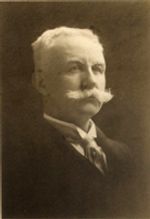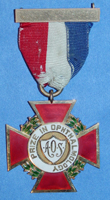 Lucien Howe, MD (1848-1928) was a seminal figure in early American ophthalmology. He began his career at a time when ophthalmology was establishing itself alongside other medical specialties and was part of a wave of new thinkers who shaped the profession.
Lucien Howe, MD (1848-1928) was a seminal figure in early American ophthalmology. He began his career at a time when ophthalmology was establishing itself alongside other medical specialties and was part of a wave of new thinkers who shaped the profession.
Dr. Howe attended medical school at Harvard University where he studied with renowned physicians such as Oliver Wendell Holmes. Then, like many of his generation, Howe chose to train in Europe. There, he worked with Joseph Lister in Edinburgh and at several ophthalmic clinics with luminaries like Hermann von Helmholtz. Dr. Howe returned to Buffalo NY in 1874. Two years later he founded the Buffalo Eye and Ear Infirmary and in 1879 he became Professor of Ophthalmology at the University of Buffalo.
During his career, Dr. Lucien Howe was known for championing social issues and medicine. For instance, when Karl Credé, MD (1810-1892) advocated treating ophthalmia neonatorum with a solution of silver nitrate, Dr. Howe recognized that this treatment could prevent the leading cause of eye infections and blindness in children. He therefore drafted legislation to make its use mandatory and in 1890 the Howe Law, as it became known, was passed by the New York State Legislature and soon other states followed suit. Dr. Howe was also active in the eugenics movement. In 1927 he was President of the Eugenics Research Association, working to prevent persons with blindness in their family histories from having children; his concern being that additional blind citizens would become a burden on American society.
 Throughout his career Dr. Howe was deeply involved in both American and foreign societies. He held important offices in the American Ophthalmological Society (AOS), the American Medical Association Section on Ophthalmology and the Medical Society of the State of New York. Dr. Howe established medals rewarding original research and distinguished service at these three organizations. In 1928 a fourth Howe Medal was created posthumously by the University of Buffalo and the Buffalo Ophthalmic Society. The most prestigious of the Howe Medals is awarded by the AOS. Established in 1919, the medal was first awarded in 1922 to Dr. Carl Koller, the discoverer of local anesthesia.
Throughout his career Dr. Howe was deeply involved in both American and foreign societies. He held important offices in the American Ophthalmological Society (AOS), the American Medical Association Section on Ophthalmology and the Medical Society of the State of New York. Dr. Howe established medals rewarding original research and distinguished service at these three organizations. In 1928 a fourth Howe Medal was created posthumously by the University of Buffalo and the Buffalo Ophthalmic Society. The most prestigious of the Howe Medals is awarded by the AOS. Established in 1919, the medal was first awarded in 1922 to Dr. Carl Koller, the discoverer of local anesthesia.
Dr. Howe left a strong legacy of training and research. In 1926, he founded the Howe Laboratory of Ophthalmology at Harvard University’s Massachusetts Eye and Ear Infirmary. The laboratory is well known for its research endeavors; its past directors include Frederick Verhoeff, MD and David Cogan, MD.